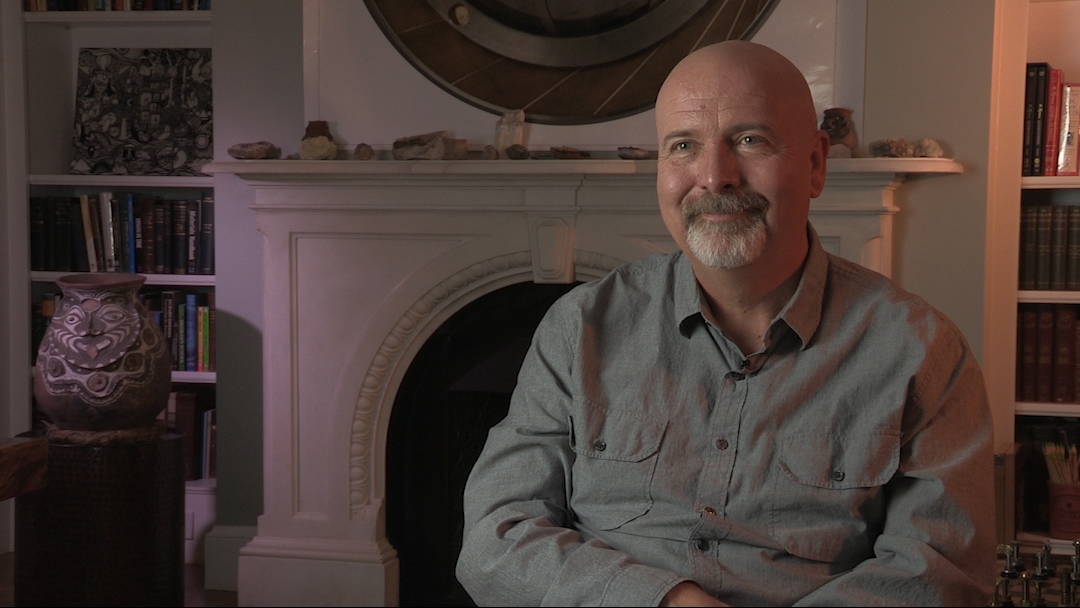NEXT STORY

Nature – the great engineer
RELATED STORIES

NEXT STORY

Nature – the great engineer
RELATED STORIES


|
Views | Duration | |
|---|---|---|---|
| 181. AI and why I built the Connection Machine | 98 | 03:24 | |
| 182. The complexity of human intelligence | 101 | 05:03 | |
| 183. Recreating evolution inside a computer | 1 | 79 | 03:38 |
| 184. Nature – the great engineer | 1 | 90 | 02:44 |
| 185. Morphogenesis as an adaptive process | 75 | 03:01 | |
| 186. The two-dimensional landscape of evolution | 74 | 03:51 | |
| 187. Evolving an intelligence with the use of computers | 69 | 00:59 | |
| 188. Programming an intelligence for solving complex problems | 66 | 03:36 | |
| 189. How to create an intelligence | 67 | 05:11 | |
| 190. My interest in proteomics | 82 | 02:50 |


I also think there's something that I'd like to do a different than what people are doing now, and this comes out of work that I did with simulated evolution. Because if you look at, for instance, how that go program was made, there was some human that fiddled with the parameters of the network, how many layers did it have, how many examples did it have, how much control did this part of it have over that part. And so it was sort of... it wasn't completely designed by learning, it was designed by a combination of human... I won't call it engineering, but human manipulation and learning. And for us, that was done by a process of evolution. So I think that one of the most interesting things would be to recreate that process of evolution inside the computer so that it was the computer that's doing all that fiddling with the parameters and the connections of things and so on. And I think that's an incredibly promising area, but what it means is that we could evolve an artificial intelligence without really quite understanding how it works. We already really don't quite understand how the neural networks work in detail. I mean, we know in principle, for instance, how they recognise objects, but if you ask how do they recognise any particular object, we'd be hard-put to explain it.
So for instance, when I did some early work in evolving computer programs that did things, I evolved programs that could sort numbers. And it evolved programs that were very, very efficient at sorting numbers, much more efficient than I could write. And I could see all the lines of code in those programs, but I couldn't explain how they worked. I couldn't tell you a story that explained why should this sequence of instructions sort numbers perfectly. And yet, they did. So you can create something without necessarily understanding it. And in fact, it may not be understandable in the sense that you can tell a story about it. And I think we're starting to realise that about neural systems. For example, we know a little tiny flatworm [sic: roundworm] called C. elegans, a nematode called C. elegans, and we know how to... we know its neural system. It can learn, it has simple behaviour. And we know every nerve in its neural system and how it's connected, and yet we really can't explain to you how it works. And that just has a few hundred neurons in it. So I'm pretty sure that even if I mapped the human brain and I told you exactly every single neuron and exactly how it was connected, you wouldn't be able to explain how the brain worked, even with complete knowledge of its connections. And so I think understandability maybe mostly only works for simple things or engineered things or social things, because it's... we understand things by turning them into causes and effects, which is a kind of a storytelling technique, and not everything is simple enough to tell an understandable story about.
W Daniel Hillis (b. 1956) is an American inventor, scientist, author and engineer. While doing his doctoral work at MIT under artificial intelligence pioneer, Marvin Minsky, he invented the concept of parallel computers, that is now the basis for most supercomputers. He also co-founded the famous parallel computing company, Thinking Machines, in 1983 which marked a new era in computing. In 1996, Hillis left MIT for California, where he spent time leading Disney’s Imagineers. He developed new technologies and business strategies for Disney's theme parks, television, motion pictures, Internet and consumer product businesses. More recently, Hillis co-founded an engineering and design company, Applied Minds, and several start-ups, among them Applied Proteomics in San Diego, MetaWeb Technologies (acquired by Google) in San Francisco, and his current passion, Applied Invention in Cambridge, MA, which 'partners with clients to create innovative products and services'. He holds over 100 US patents, covering parallel computers, disk arrays, forgery prevention methods, and various electronic and mechanical devices (including a 10,000-year mechanical clock), and has recently moved into working on problems in medicine. In recognition of his work Hillis has won many awards, including the Dan David Prize.
Title: Recreating evolution inside a computer
Listeners: Christopher Sykes George Dyson
Christopher Sykes is an independent documentary producer who has made a number of films about science and scientists for BBC TV, Channel Four, and PBS.
Tags: evolution, learning, intelligence, neural networks, artificial intelligence, behaviour, learning, human mind, mapping, computer
Duration: 3 minutes, 38 seconds
Date story recorded: October 2016
Date story went live: 05 July 2017